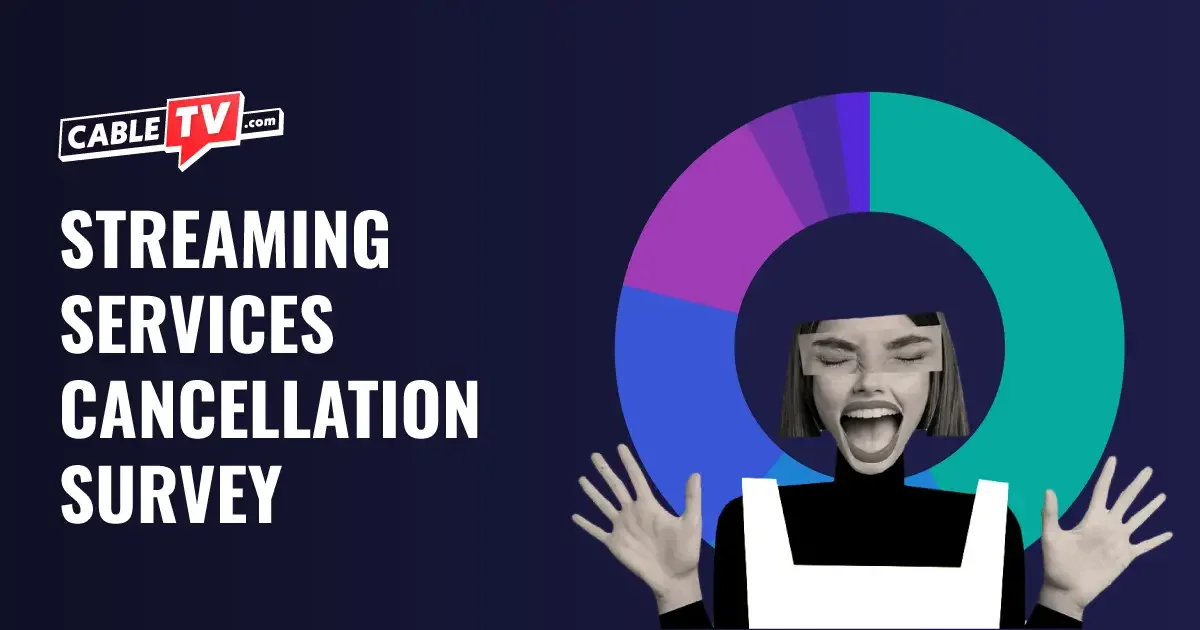
Have you ever considered canceling a streaming service? You’re not alone. According to search volume data, 102,000 people search “how to cancel streaming services” every month.
Streaming is the biggest thing in TV right now, and the landscape of the industry is constantly changing. The vast majority of people are subscribed to at least one streaming service. So what would drive someone to cancel their subscription?
Our intrepid team of TV lovers wanted to find out, so we ran a survey of 1,000 Americans to find out exactly what the streaming landscape looks like in 2025. Keep reading for the full breakdown.
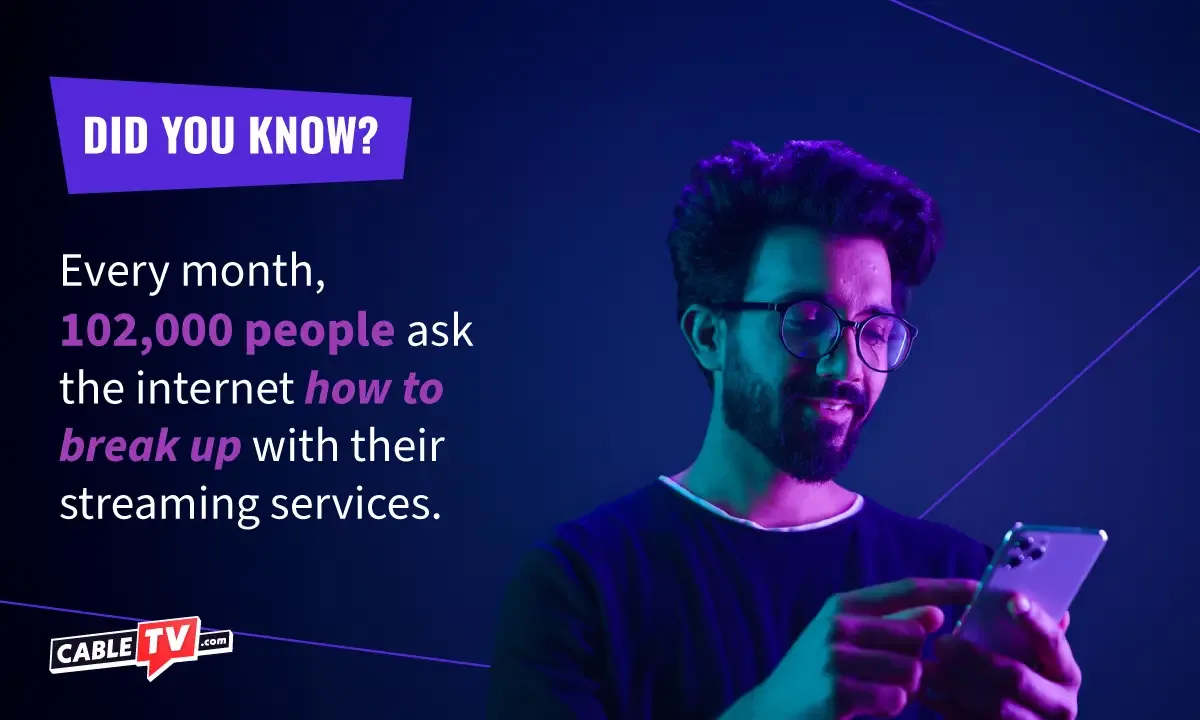
Welcome to CableTV.com.
If you’re interested in this article, we have good news: we’ve got more! No paywalls, just pages and pages of helpful guides, reviews, and studies to help you make informed decisions. Subscribe to our email list and you’ll never miss a post!
By signing up, you agree to our Privacy Policy & Terms and Conditions.
How people are using streaming services in 2025
According to our survey, 92%* of people are subscribed to at least one streaming service. 79% are subscribed to more than one streaming service, and 21% are subscribed to five or more.
That means one in five people have access to a vast, multi-platform library of shows, and are probably paying $50+ per month for that access. That is, unless they have a cable bundle like the one that Spectrum currently offers, which adds several popular streaming subscriptions onto one cable TV package. But that deal does just feel like an extension of cable TV rather than a true decentralized streaming experience.
If you’re curious, 8% of Americans (that’s about 21.8 million, if you’re doing the math) are those brave souls who don’t subscribe to any streaming services. It must be nice being able to touch grass.
*For simplicity, all figures are rounded to the nearest whole number.
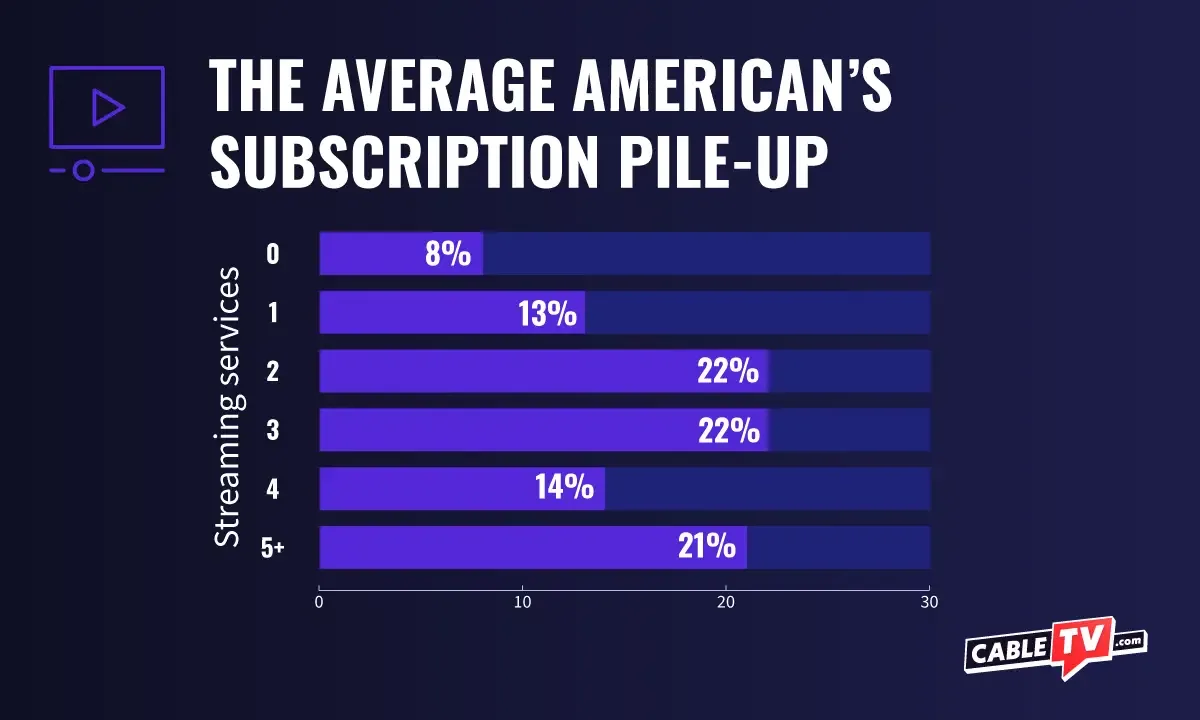
How many streaming services is too many?
About one in three (36%) Americans have canceled a streaming service in the last year.
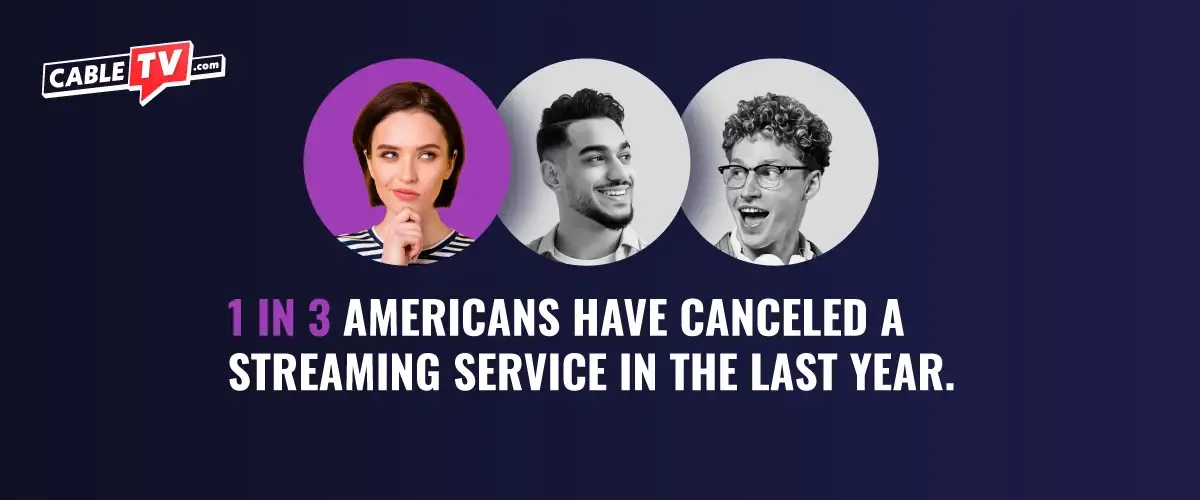
Surprisingly, only about one in four (26%) Americans claim to suffer from “subscription overload,” or in other words, having too many streaming services. 12% of people who canceled a subscription cited subscription overload as the reason.
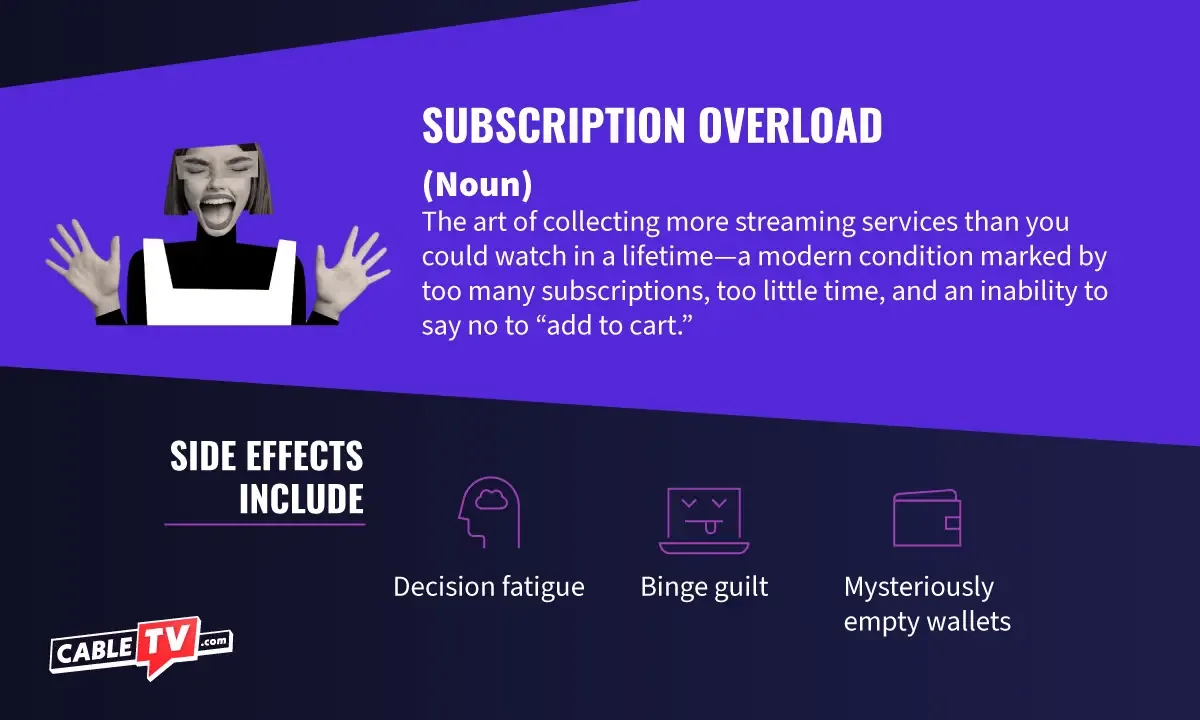
So if it’s not market oversaturation, what’s driving people to unsubscribe from streaming services?
Why do people cancel their streaming services?
It all comes down to cost.
We pulled those consumers who canceled a streaming service last year aside and asked them what finally made them want to ditch their subscriptions. Our poll gave seven possible reasons:
- Too expensive
- Finished the show/movie I subscribed for
- Not enough new or quality content
- Too many subscriptions to manage
- Switching to cable or live TV
- Technical or user experience issues
- Tired of ads
We also gave respondents the option to write in their own reason if it wasn’t already on our list. However, most people chose one of our pre-written options, and only 1% selected “Other.”
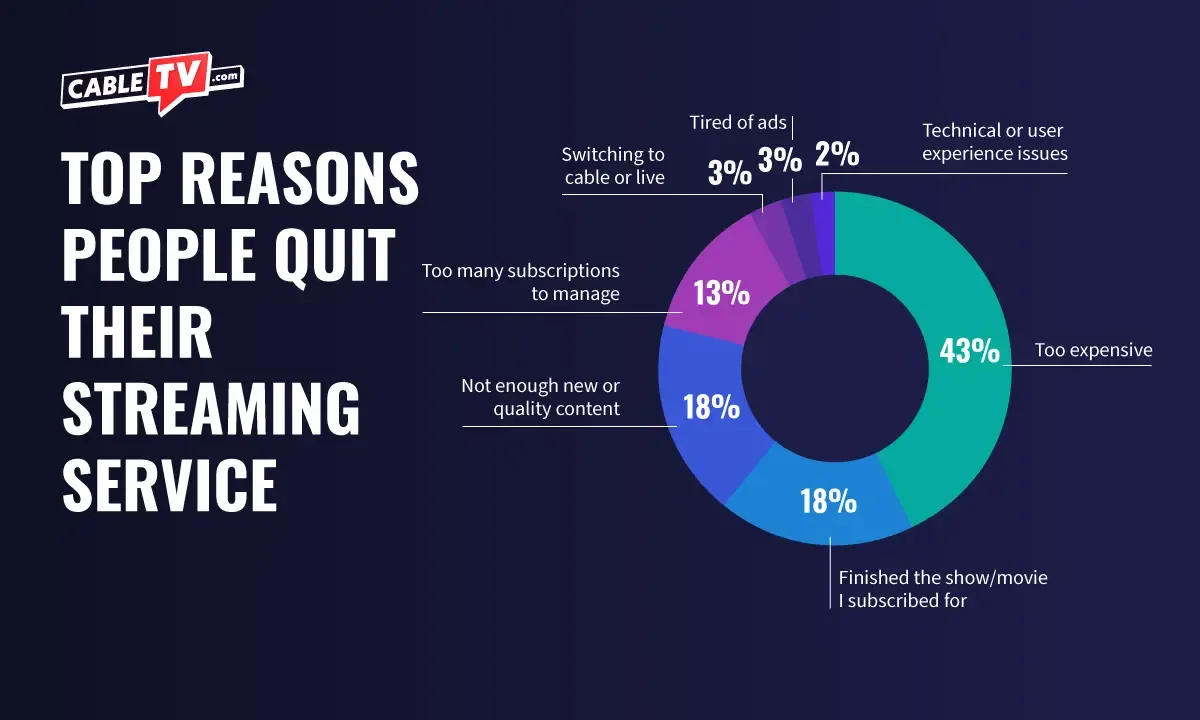
#1: Too expensive
The number one reason viewers canceled streaming subscriptions in the last year? The expensive price tag. 43% of people who canceled streaming services cited cost as the number one reason. It wasn’t that long ago that people were canceling their cable subscriptions for cheaper streaming alternatives, but now there’s not too much difference in cost between the two options. According to Reviews.org, the average cable subscription costs $89.29 per month.
Some streaming services, like Netflix and HBO Max, have already raised their prices to more than $20 a month. Once you start accumulating more than five streaming services—especially those pricier premium tiers—you start to wonder what the point of streaming is to begin with.
#2: Finished the show/movie I subscribed for
The second most popular reason, representing 18% of people who cancelled streaming services, was simply a lack of interest: They finished the shows and movies they subscribed for and were ready to move on to the next thing. One person even specified that they canceled their subscription once baseball season ended. (Streaming services have been leaning hard into sports in recent years, even beyond the regular sports streamers like ESPN+. For example, Major League Baseball games air every Friday on Apple TV+ instead of traditional cable).
“Seasonal” subscriptions are becoming more popular as prices increase and consumers are looking for ways to cut unnecessary costs. If you’re only subscribed to Netflix for Wednesday and Stranger Things, why would you keep your subscription during their long hiatuses?
One way that Netflix tries to combat this kind of seasonality is by breaking seasons into multiple drops. Season 2 of Wednesday is split between this August and September, and the long-awaited final season of Stranger Things will be divided into three volumes leading up to New Year’s Eve. These kinds of releases generate hype, but also force seasonal subscribers to hang around for another month.
Unfortunately, streaming services have yet to realize that there’s an easier, tried-and-true method of getting subscribers to stick around. And that’s by having longer seasons that air weekly for large portions of the year. You know, like how cable TV used to do it. Renewing shows for more than one season also helps. Yes, these are more expensive methods, but if they’re not spending it on making better shows, where is all of the revenue from inflated prices going?
#3: Not enough new or quality content
The third most popular (18%) reason people canceled streaming services in the last year was a lack of new or quality content. Yes, streaming services have produced some truly spectacular shows, but budgets have gotten tighter in recent years, and it feels like a lot of companies are scaling back production.
The thing about streaming services is that they’re a subscription, so customers are essentially making a new purchase every single month. If someone pays for a month of a subscription but doesn’t find anything new to watch during that time, it feels like a waste of money.
On the other hand, churning out an endless supply of content can be dangerous, too. Netflix tried that for a long time and gained something of a reputation for mediocre content. There are a lot of great Netflix Originals, to be sure, but there are also a lot of flops. (Or shows that Netflix canned before they had the chance to become great.)
Maybe that’s why streamers are leaning so hard into bundling these days. By combining Paramount+ with SHOWTIME or Hulu with Disney+, they maximize the amount of content people receive from each payment, even if those payments are still getting more expensive.
Netflix is the most popular streaming service …
A lot of people have a complicated relationship with Netflix. It’s the OG streaming service, but its prices in recent years have a lot of people questioning whether it’s worth the trouble. It produces a lot of fan-favorite shows like Stranger Things and Bridgerton—but at the expense of dozens of other shows that get canceled after a single season.
It probably shouldn’t be surprising, then, that this survey’s respondents were just as conflicted about the big red streaming service.
We asked participants which streaming service they would pick if they were only allowed to subscribe to one. The answer was pretty overwhelmingly Netflix, with 42% of the vote. The second-most popular answer was Hulu, which received a measly 13%. On the other end of the scale, only 2% of people would keep Apple TV+, no matter how good Severance gets.
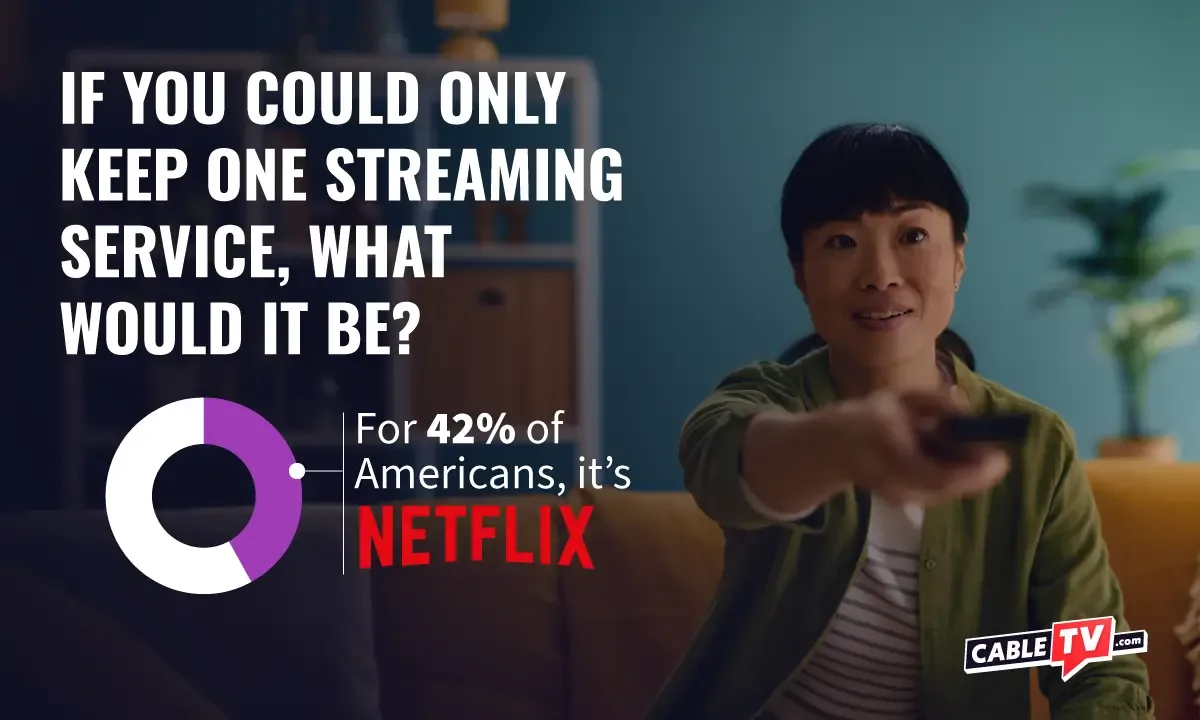
… but it’s also the most popular to cancel
We asked our participants which streaming services they canceled in the last year, with the option to choose as many as they wanted. Once again, Netflix took first place as the most-cancelled streaming service.
32% of respondents admitted to cancelling Netflix in the last 12 months, while 31% cancelled Hulu and 31% cancelled Disney+.
It’s interesting how closely the “most popular” category results mirror the “most popular to cancel” category results. Take a look at this:
| Streaming Service | Ranking (popularity) | Ranking (Cancellation) |
|---|---|---|
| Netflix | 1 | 1 |
| Hulu | 2 | 2 |
| Disney+ | 4 | 3 |
| HBO Max | 5 | 7 |
| Prime Video | 3 | 4 |
| Apple TV+ | 9 | 8 |
| Peacock | 7 | 6 |
| Paramount+ | 6 | 5 |
| Other | 8 | 9 |
These two rankings would be near-identical if Disney+ wasn’t causing problems. (Disney+ is less popular than Hulu, but people tend to cancel them both at the same time given that they’re owned by the same company and are often sold together in a bundle. The Disney Bundle is the smartest choice just because it financially doesn’t make much sense to subscribe to one without the other.)
Some of these services may be customers’ ride-or-die, but that doesn’t change their price tags. Yes, if most people could only choose one service, they’d choose Netflix. But we don’t live in the world of that hypothetical, and sometimes you have to cancel your favorite streaming service for financial reasons.
One last thing to note before moving on: A worryingly small number of people would pick Apple TV+ if they were limited to just one streamer. It placed above “other” in cancellation, but not in popularity. Apple might bundle its streaming service with a competitor like HBO Max or Peacock in the near future if things get too dire.
What comes next for unsubscribers
So if all these people are cancelling their subscriptions, how are they getting their television? We had to find out.
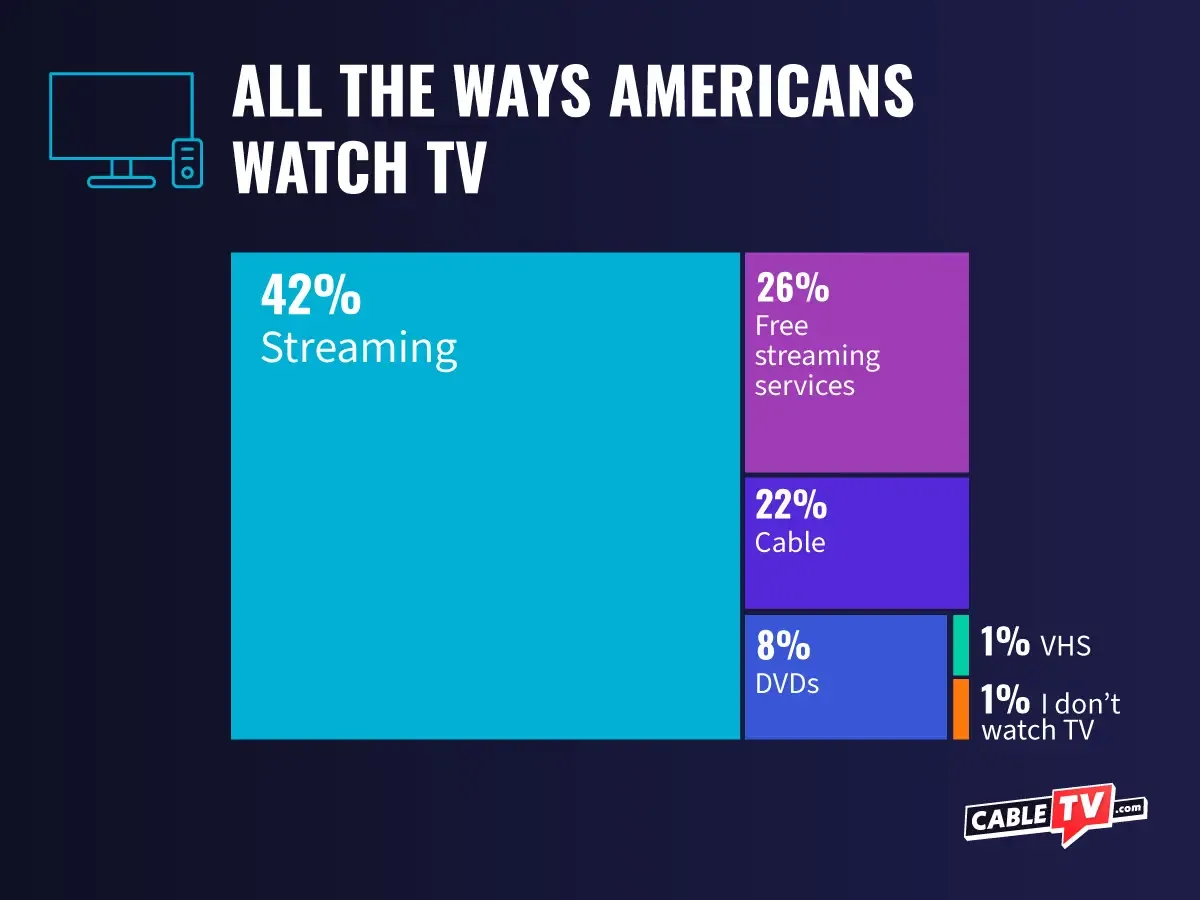
We asked our participants what they did after cancelling a streaming service, and this time, we gave them five options:
- Switched to another streaming service
- Re-subscribed to cable or live TV
- Subscribed to a FAST (free ad-supported television) service like Pluto TV, Tubi, or Roku channel
- Didn’t replace it with anything
- Re-subscribed later to the same service
#1: Didn’t replace it with anything
44% of people answered that they didn’t replace their canceled service with anything. That means people are reducing the amount of television they watch—or maybe doing away with it altogether. When given the choice between high prices and choosing another hobby, people tend to just move towards another hobby.
#2: Switched to another streaming service
The second-most popular response, with 37%, was “switched to another streaming service.” The thriftiest way to manage subscription overload might be to focus on one subscription at a time. Sign up for a service around the time a big show is supposed to come out, use the month to watch any other hits you might have missed, and then switch to a competitor the next month.
You might have to avoid social media spoilers a little if more than one service has a big release in the same month, but it would probably do us all good to step back from social media anyway.
#3: Subscribed to a FAST service
This one will make advertisers happy. 22% of respondents switched to an ad-supported streaming service like Pluto TV or Tubi. Ad-supported TV services have grown in popularity in recent years as the masses yearn for cable TV—at least, that’s what FAST providers want you to believe.
FAST services do fill the need for out-of-order reruns and travel agency ads. But on-demand streaming services could already provide both of those. More likely, people are switching to FAST services because of the price. A lot of people (about one in five, according to our data) will accept ads and a slightly outdated content library if it means they don’t have to pay $24.99/mo. for Netflix Premium.
FAST services aren’t the only free alternative to pricey services (your local library’s DVD collection can attest to that), but they’re convenient, and that counts for a lot as well.
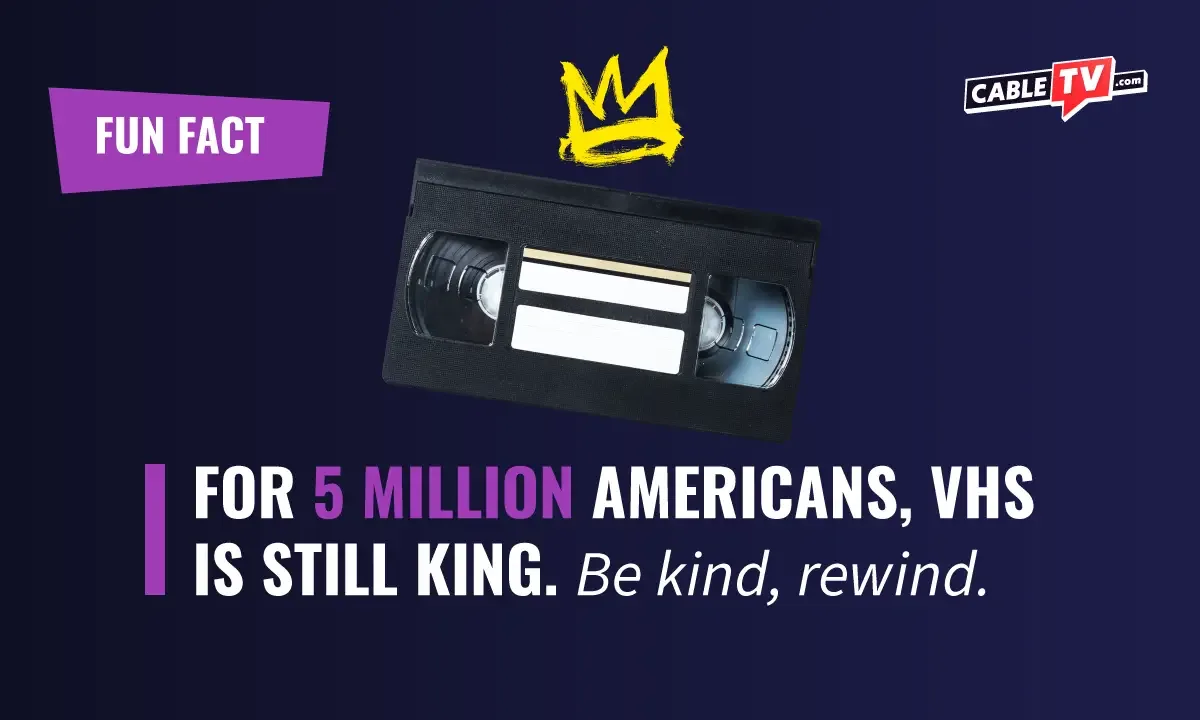
Should you cancel your streaming subscription?
36% of Americans have cancelled a streaming service in the last year, and 44% of those people didn’t replace their service with anything. Streaming isn’t necessarily falling out of fashion any time soon, but people are certainly reevaluating how many they need and whether they can afford every service in today’s economy.
If you’re worried about your streaming bills getting more and more expensive, cancelling is a valid option. But if you’re just looking for a discount, cancelling might be the way to go as well. Several streaming services have a history of offering cancellation discounts.
- HBO Max emails 50% off coupons to people who have recently cancelled their subscriptions. This deal lasts for six months after you return.
- Peacock asks customers to stay during the cancellation process. We haven’t seen their new deal since the company raised prices for 2025, but generally, they give a discounted rate for six months.
- Disney+ and Hulu also email old customers with a special offer after they cancel a subscription to the Disney Bundle. We’ve seen it happen with the Duo Basic bundle, but it might happen with others as well.

Still intent on ditching streaming? That’s cool too. Gen Z is bringing physical media back in a big way, and your local library is a great place to start. You just might have to dig out your old DVD player.
Why you should trust us
At CableTV.com, we’ve got a passion for documenting all the ins and outs of modern streaming services. We love TV in all its forms, and we’re committed to creating those crucial guides and reviews that’ll help you make the best decisions for your household.
To learn more about our staff of experts, head over to our About Us page. For more on our research methods, head over to our How We Rank page

